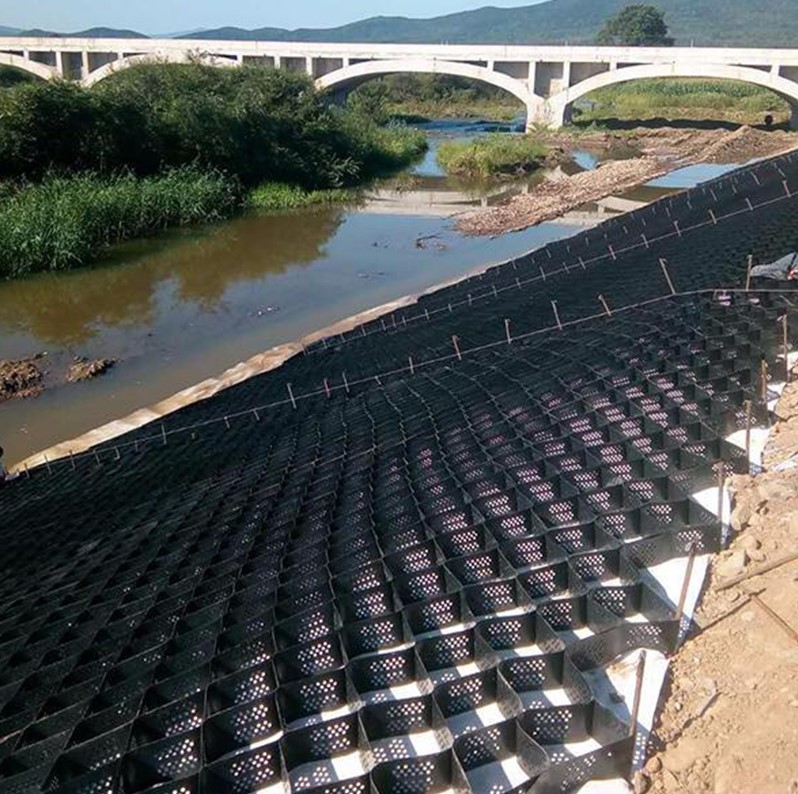Geogrid reinforced slope is a type of slope stabilization technique that involves the use of geogrids, which are synthetic materials made of high-density polyethylene (HDPE) or polyester. The geogrids are placed horizontally within the soil mass to provide additional tensile strength to the soil structure, thereby improving its stability.

The process of constructing a geogrid reinforced slope typically involves the following steps:
- The slope is excavated and prepared for reinforcement.
- A layer of geotextile fabric is placed over the slope to prevent erosion.
- The geogrids are laid horizontally in a grid pattern, with the ends of the geogrids anchored into the soil using soil nails or other types of anchors.
- The soil is then backfilled over the geogrids and compacted to form the reinforced slope.
The use of geogrids can significantly increase the slope’s bearing capacity, reduce lateral movement, and provide long-term stability. Geogrid reinforced slopes are commonly used in road and railway construction, mining operations, and other infrastructure projects where steep slopes are required.
